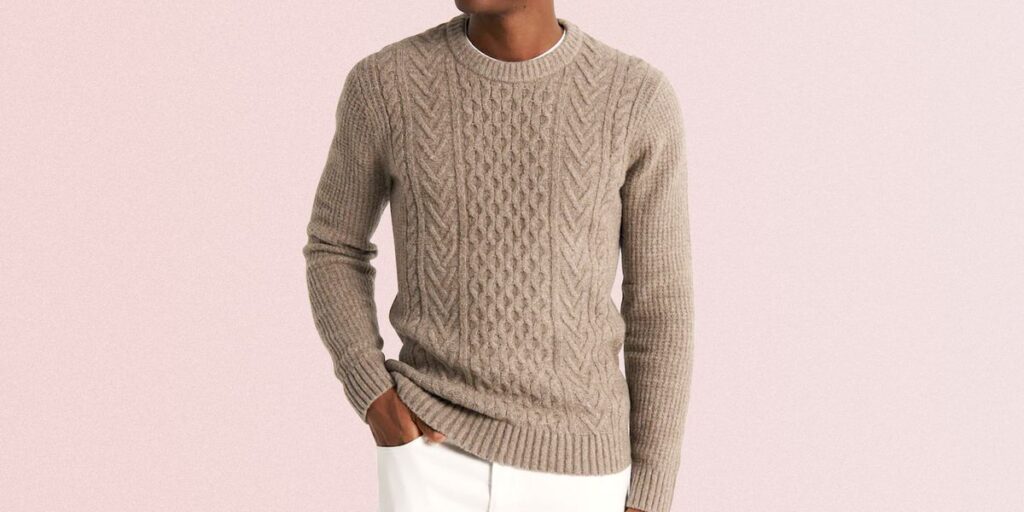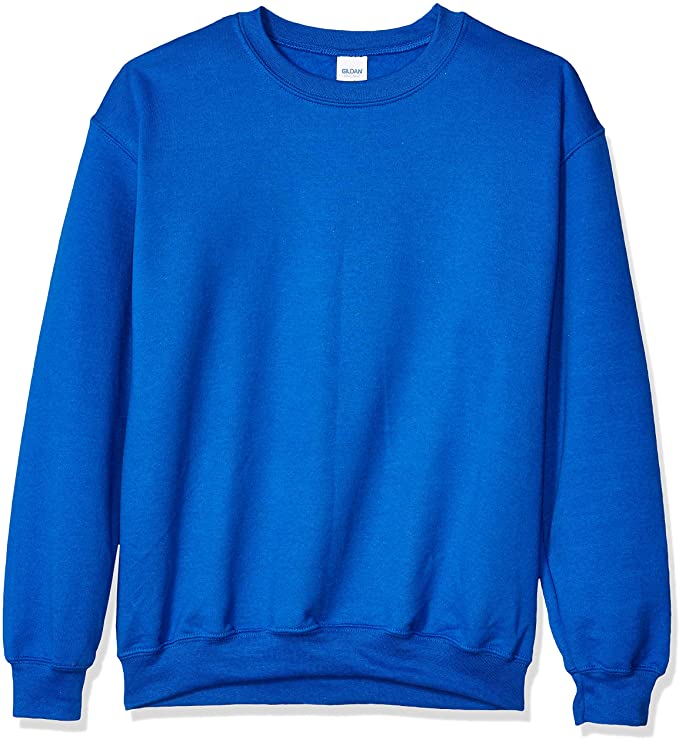What Is Sweater?
A sweater is a piece of knitted or crocheted upper wear that is designed to keep you warm by covering your arms and torso. Although A sweater just like a hoodie or sweatshirt can be made using wool, cotton, or polyester, a sweater is softer and more elastic.
Sweaters can be worn by people of all ages, regardless of the gender. They are versatile and can be worn over another top or next to the skin. Sweaters can be worn with a dress shirt and a tie, or, if long enough, can be worn as a short dress with a belt and tights. They can also be fashionably carried when not worn by knotting around the waist or over the shoulders.
The front of the sweater can be open (also called “cardigan” in the U.S. and U.K.) or closed (also called “pullover” or “jumper” in the U.K.). The neckline can be a turtleneck, v-neck, or crewneck and the hemline can fall right below the hip or above the hip. There are also sweaters that are long enough to be worn as short dresses for women. The length of the sleeves can vary from three-fourths to short-sleeves to full sleeves.

What You Need To Know About Sweater
- Sweaters are made from interlocking loops of a continuous yarn (knitting) and as result they are elastic and flexible.
- A sweater is knitted from either wool or cotton and can have buttons, zipper or be a pull over.
- Patterns and graphics on sweater are created in the same garment knitting process.
- A sweater is more versatile than a sweatshirt. It can be worn as casual or dressy outfit. It can be worn with a dress shirt and a tie or as a short dress for women.
- There are hundreds of sweater designs available in the market today (closed front, open front, v-neck, round-neck, turtleneck, crewneck, short, long, short-sleeved, long-sleeved etc.
- A sweater is designed to provide warmth and not to absorb sweat.
What Is Sweatshirt?
A sweatshirt, or “jersey” in the U.K., is a collarless loose upper garment that is typically made of cotton or polyester and typically designed to provide warmth and not to absorb sweat.
A sweatshirt is made from a knitted type fabric that has fleece on the inside, which is a heavy fabric material on one side and soft cotton material on another side. In other words, The outer side of the sweatshirt is soft while the inner has a fluffy nap which is designed to trap air and retain body heat, hence the name “sweatshirt.”
Most sweatshirts have nearly the same pattern or silhouette. A sweatshirt can be a pullover (have a closed front) or an open front (with zippers), with a hood (also called a “hoodie”) or without a hood. Patterns and graphics on a sweatshirt are created from the weaves of the cloth or separately by printing, dyeing, embroidering, painting, spraying and sewing on the fabrics.
Sweatshirt has a sporty and athletic appearance and is commonly worn with sweatpants to form a sweatsuit, which is an ideal exercise outfit that guarantees perspiration. It can also be worn as a casual or leisure outfit.

What You Need To Know About Sweatshirt
- A sweatshirt is made from a knitted type fabric that has fleece on the inside, which is a heavy fabric material on one side and soft cotton material on another side. It can be a pullover or have a zipper in the front.
- Despite the name, sweatshirt does not have to be wool; sweatshirts can be made of cotton, synthetic fibers or other materials.
- Patterns and graphics on a sweatshirt are created from the weaves of the cloth or separately by printing, dyeing, embroidering, painting, spraying and sewing on the fabrics.
- Sweatshirt has a sporty and athletic appearance and is commonly worn with sweatpants as exercise wear, though it can also be leisurewear.
- Most sweatshirts have nearly the same pattern or silhouette. The only variation is that they may or may not have a hood or a zipped front.
- A sweater is designed to provide warmth and not to absorb sweat.
Difference Between Sweater And Sweatshirt In Tabular Form
| BASIS OF COMPARISON | SWEATER | SWEATSHIRT |
| Description | Knitted or crocheted upper wear that is designed to keep you warm by covering your arms and torso. | A collarless loose upper garment that is designed to cover your upper body to make you sweat. |
| Material | A sweater is knitted from wool, cotton, fleece or other softer, more natural textile. | Sweatshirt does not have to be wool; sweatshirts can be made of cotton, synthetic fibers or other materials. |
| Alternative Names | Also referred to as ‘’cardigan’’ or ‘’jumper’’ in the U.K and U.S | Also referred to as a ‘’jersey’’ in the U.K and U.S |
| Design | A sweater can have buttons, zipper or be a pull over. | A sweatshirt can be a pullover or have a zipper in the front. |
| Texture | It is generally soft and more elastic (flexible), because it is either knitted or crocheted. | The sweatshirt is not elastic but soft. Its inside lining has a fluffy nap. |
| Making Process | Sweater is made by knitting or crocheting (by knit circular machine). | Sweatshirt is made from cutting and sewing patterns of either knitted or woven fabric. |
| Dressing | Sweaters are also made to be worn with any type of clothing from casual to work clothing. | Sweatshirts are either for workouts or casual wear. |
| Nature | Sweater is thick and heavier than Tshirts or Sweatshirt. | Sweatshirt is heavier and thicker than Tshirts and less elastic or flexible than sweaters. |
| Band At The Bottom | Depending on the design, sweater may either have a band at the bottom or not. | A sweatshirt has a band at the bottom. |
| Appearance | Has a dressy look; can be worn with a dress, T-shirt or shirt and tie. | Has a casual or sporty look; commonly worn with sweatpants to form a sweatsuit. |
| Purpose | A sweater is designed to provide warmth and not to absorb sweat. | A sweatshirt is designed to provide warmth and absorb sweat. |
| Sleeves | A sweater can be sleeveless. | A sweatshirt usually has long sleeves. |
| Patterns And Graphics | Patterns and graphics on sweater are created in the same garment knitting process. | Created from the weaves of the cloth or separately by printing, dyeing, embroidering, painting, spraying and sewing on the fabrics. |